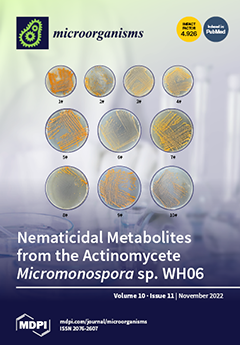The aim of this study was to investigate the differences of
Clostridioides difficile infection (CDI) during the COVID-19 pandemic compared to the pre-COVID-19 era. CDI patients treated at the Clinic for Infectious Diseases, Clinical Center of Vojvodina, Serbia during 2017–2019 (
n = 304) were compared with COVID-19/CDI patients treated in period September 2021–September 2022 (
n = 387). Groups were compared by age, gender, comorbidities, previous medications, laboratory findings, and outcome within 30 days. In the CDI/COVID-19 group, we found: greater percentage of males 59.8% vs. 42.6% (
p ≤ 0.001), older age 72.8 ± 9.4 vs. 65.6 ± 11.7 (
p ≤ 0.001), higher Charlson comorbidity score (CCS) (3.06 ± 1.54 vs. 2.33 ± 1.34 (
p ≤ 0.001), greater percentage of chronic renal failure (33.9% vs. 23.4% (
p = 0.003), malignances (24.3% vs. 13.5% (
p ≤ 0.001), chronic obstructive pulmonary disease (22.7% vs. 15.5% (
p = 0.017), higher usage of macrolide (38.5% vs. 8.6% (
p ≤ 0.001), greater percentage of patients with hypoalbuminemia ≤25 g/L (19.6% vs. 12.2% (
p ≤ 0.001), lower percentage of patients with elevated creatinine (≥200 mmol/L) (31.5% vs. 43.8%) (
p = 0.002), and greater percentage of lethal outcome 29.5% vs. 6.6% (
p ≤ 0.001). In the prediction of lethal outcome multivariate regression analysis extracted as an independent predictor, only higher CRP values in the non-COVID-19 group and in the COVID-19 group: older age (
p ≤ 0.001), CCS (
p = 0.019) and CRP (
p = 0.015). COVID-19 changes the disease course of CDI and should be taken into consideration when managing those patients.
Full article






